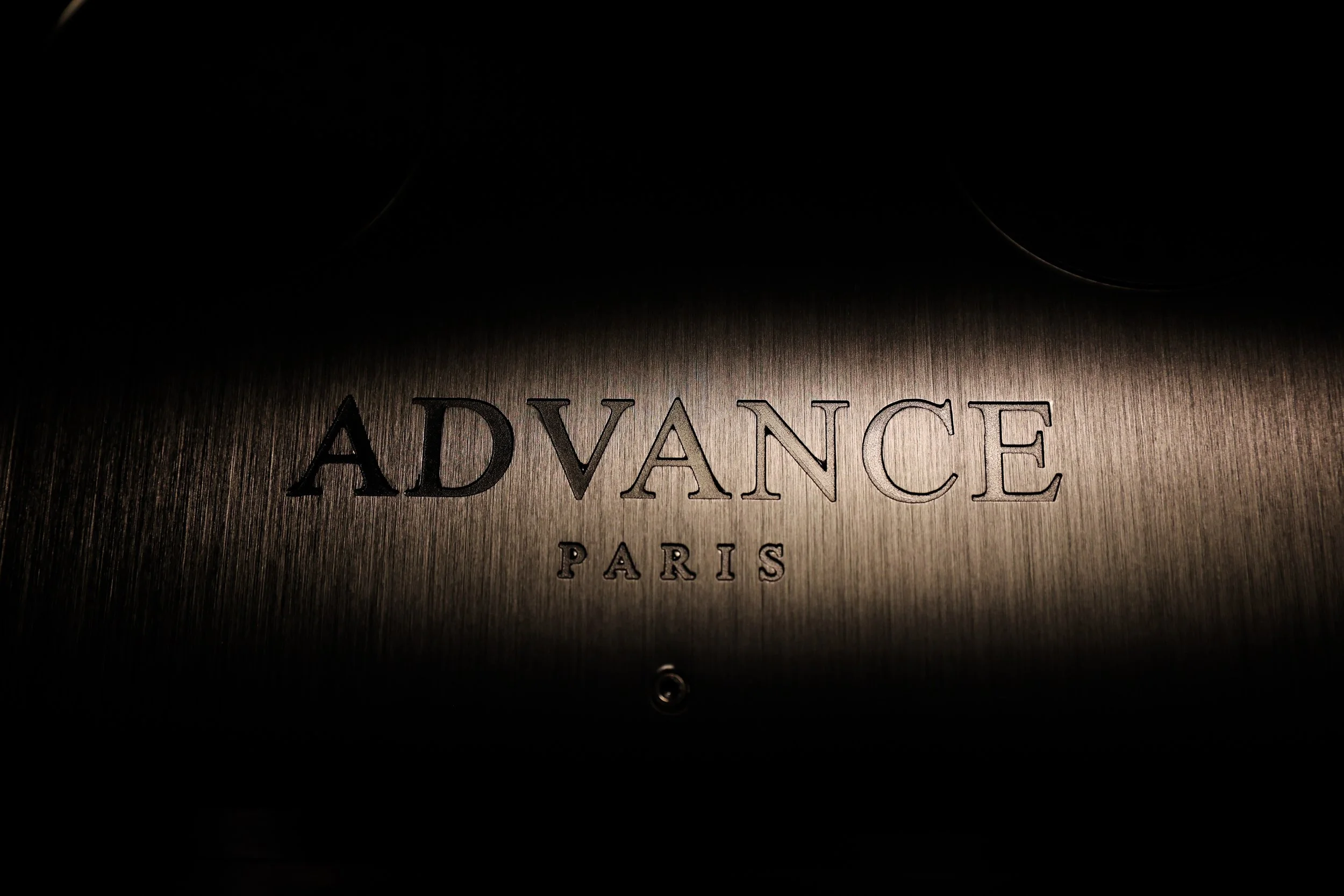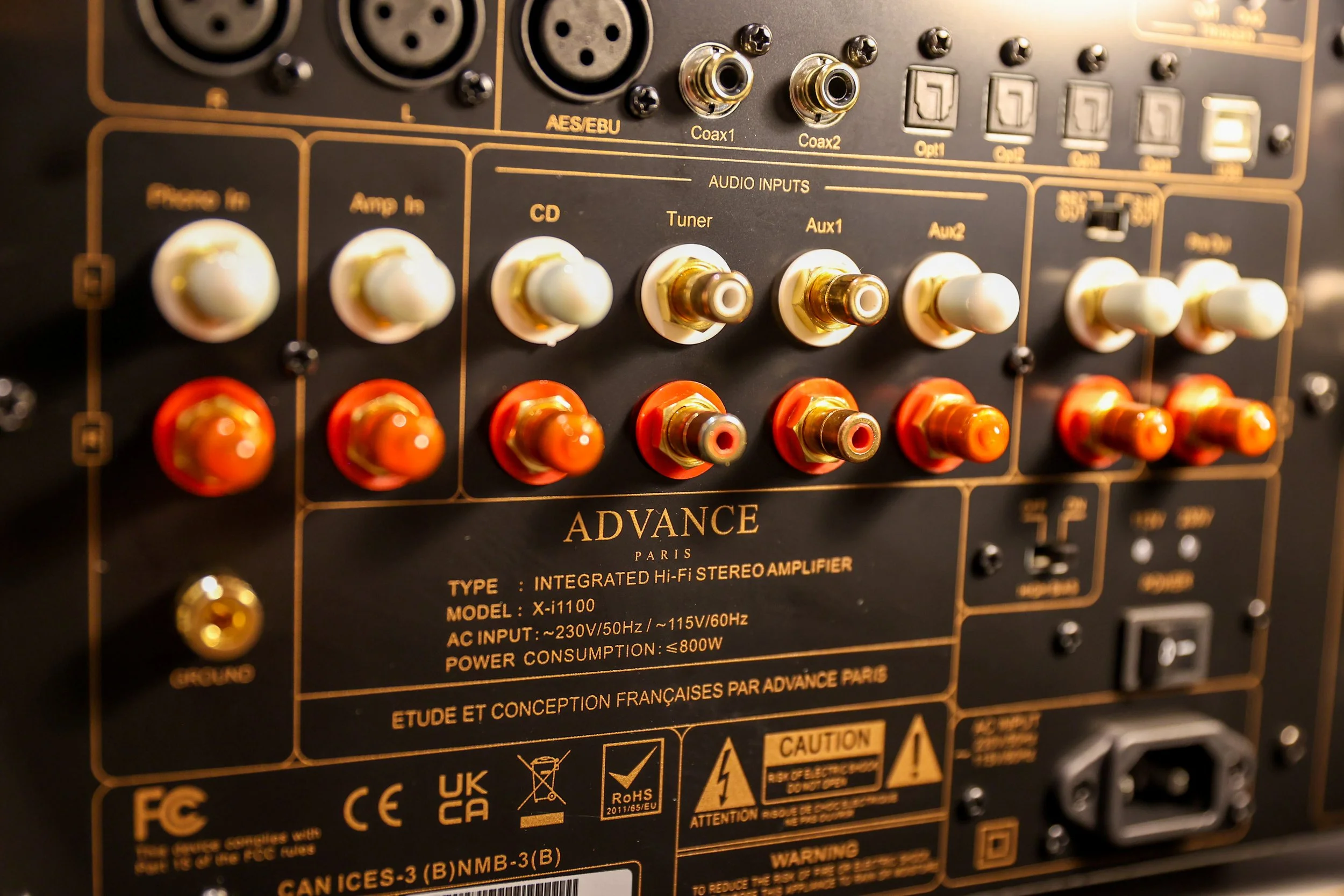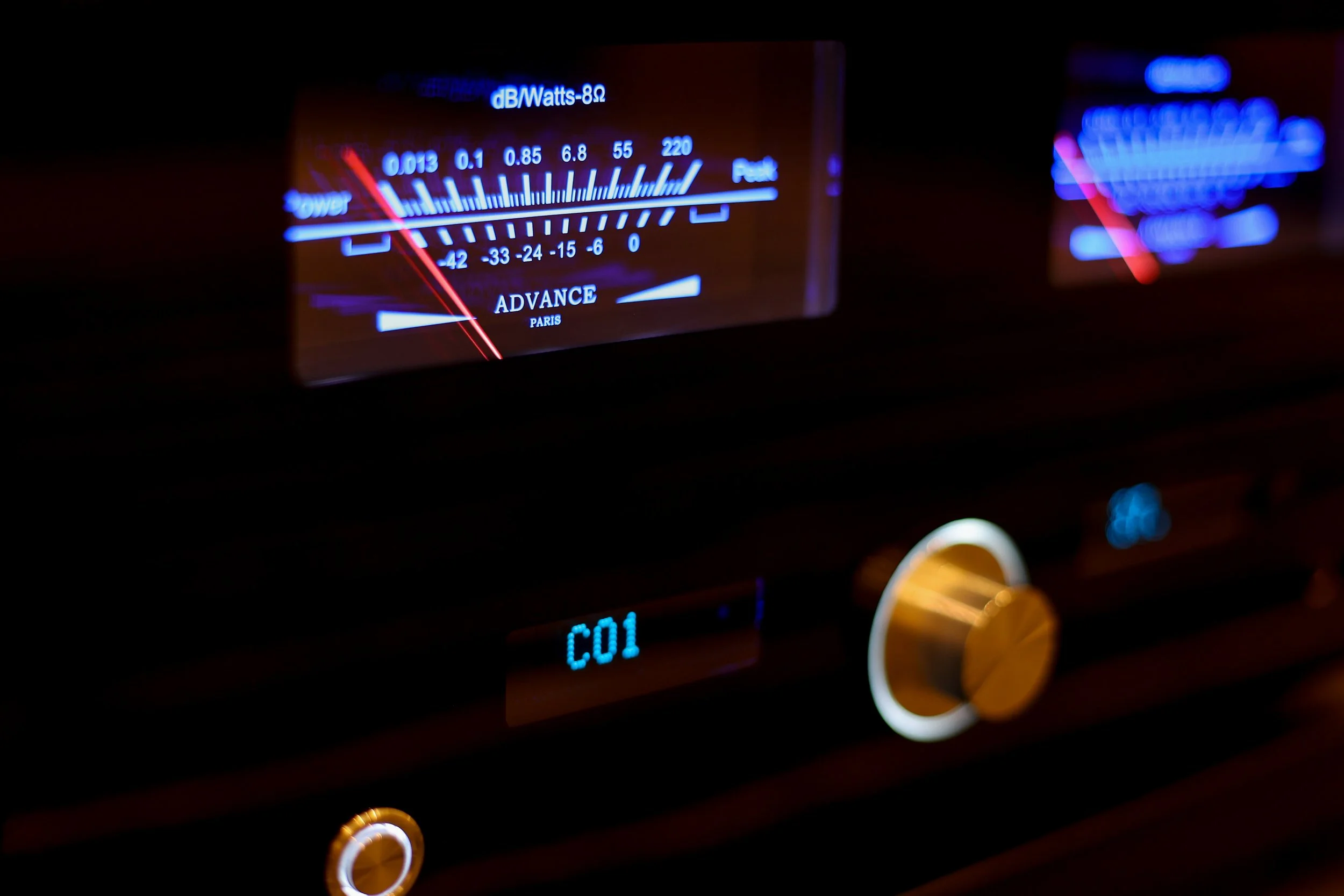A Room With Two VU's - The Advance Paris Xi-1100 Integrated Amplifier
/oooo, an artistically lit logo. someone’s brought their ‘a’ game.
Nouveaux jouets!
(New toys)
The most recent brand to arrive at Audio T Swansea’s golden shore, is the hitherto little-known in Britain (yet 25 year-old French marque), Advance Paris.
So little-known on this side of la Manche, it’s nigh-on an Audio T exclusive. Far be it for me to make sweeping generalisations and regurgitate national tropes about our continental cousins, but they do like to do some things a little differently over there. A case in point is this Xi-1100 integrated amplifier..
Design inspiration by Sebastien Chabal?*
for the avoidance of doubt, it’s the unit on the bottom shelf.
We are used to great slabs of machined aluminium gracing amplifiers of this cost, yet here we have polished acrylic hiding those slabs of aforementioned metal that in turn, hide a robust, pressed steel chassis. Apart from the two funky, dirty-great-big, blue and orange VU meters of course.
almost intimidating aren’t they?
The stout construction delivers an all-up weight of 20kg (44lbs) which is bang on trend for this price bracket and most impressive when one has to manipulate it about for a photo shoot. Je vous remercie (Thank you to those not down with the lingo).
A great deal of that mass is the large toroidal transformer, mounted vertically just behind the double fascia and the impressive six-compartment construction of the interior, complete with aluminium heatsinks running down the flanks. This is all very reassuring, as is the specification; 220 Watts into 8 Ohms is respectable enough, but to near-double that up to 400 Watts into 4 Ohms, is impressive and hints at some very useful headroom indeed, should you have a loudspeaker that presents a less than charitable load.
The Detail
In common with many modern amplifiers, the ‘1100 has digital as well as analogue inputs and a phono stage to boot. Moving magnet only in this case, which makes sense to us, as anyone who has a Moving Coil cartridge is probably going to want a discrete moving coil phono stage. In my experience they sound better.
reassuringly built and mightily solid it is too.
Uncommonly, the Xi-1100 has two DACs (digital to analogue converters) A ‘regular’ one from Texas Instruments (they don’t just make calculators you know!) a Burr-Brown PCM1796 which is connected to the four optical, two coaxial and single AES (the one that looks like an XLR socket) digital inputs, which can decipher up to 24bits at 192KHz. The second DAC is an X-MOS processor and ‘jitter-corrected USB3318’ used purely for the USB-B input. Not something often seen and (we are reliably informed) resolves the compromise of having one DAC do two slightly different jobs and compromising the performance of one of them. Remarquable!
A comprehensive selection of analogue inputs inhabit the rear panel: four component RCAs, that aforementioned phono stage with ground screw, an XLR, an RCA pre-amp input (handy for home theatre applications) plus a variable-level RCA pre-out (to connect a power amplifier or subwoofer) and a switched, fixed-or-variable RCA output labelled ‘Tape/Subwoofer.’ Oh and no fewer than six loudspeaker terminals. Four are labelled ‘output A’ and two ‘output B’. When you realise that output A is for bi-wiring, six terminals for a stereo amplifier makes a little more sense. You could even tri-wire, should you feel inclined. Logique.
i said they like to do things differently and i was right. those unusual bi-wire terminals.
There is one more design feature that has an impact on performance; This amp runs pure Class A up to 45W but when more current is required, the Xi-1100 engages Class A/B. This is of benefit as we get the body, weight and finesse of Class A most of the time, but without the attendant enormous power consumption and heat creation of a fully Class A design. Bon.
So what does it sound like?
We connected a pair of Dynaudio Special 40, (famously a 4 Ohm design that prefers...robust amplification) and they simply sat up and did as they were told.
With the analogue inputs, not as weighty and forceful as one might expect, given the sheer size of the unit, the specs described and those mighty VU meters. It’s...correct. It isn’t bright, it isn’t overly warm, it’s accurate and it is engaging. It doesn’t have a particularly pronounced presence band either, it simply gets on with the job of keeping out of the way of the artiste, an open window on the performance if you will. If it isn’t on the disc, (or in the data file!) it ain’t coming out of the speakers. Bravo!
couldn’t resist another pic of those v-u’s, especially when the photographer has taken so much trouble with the bokeh.
Via the DACs, the picture is a little different. It’s gentler than I expected, tracks known to be bright or even hard, are presented with an evenness and grace I had not experienced before. The same scale is still there on orchestral pieces, or electronic landscapes, but the music has an unforced quality about it whilst still keeping the listener engaged. I think this amplifier may be the cause of many a late-night listening session. Now, where did I put my copy of Tom Waits’ Swordfish Trombones...?
But don’t take my word for it, the Advance Paris Xi-1100 is on demonstration at our Swansea store right now, so pay us a visit tout suite.
Merci d’avoir lu ceci (Thank you for reading)
Ade - Audio T Swansea
If you have any questions about any of the equipment featured in this article, or any other Hi-Fi or home cinema enquiries, be sure to Contact Us
If you’ve enjoyed this, why not go ahead and read some more of our other blogs, and be sure to follow us on our social media channels below…
Advance Paris can be found at the following Audio T stores














